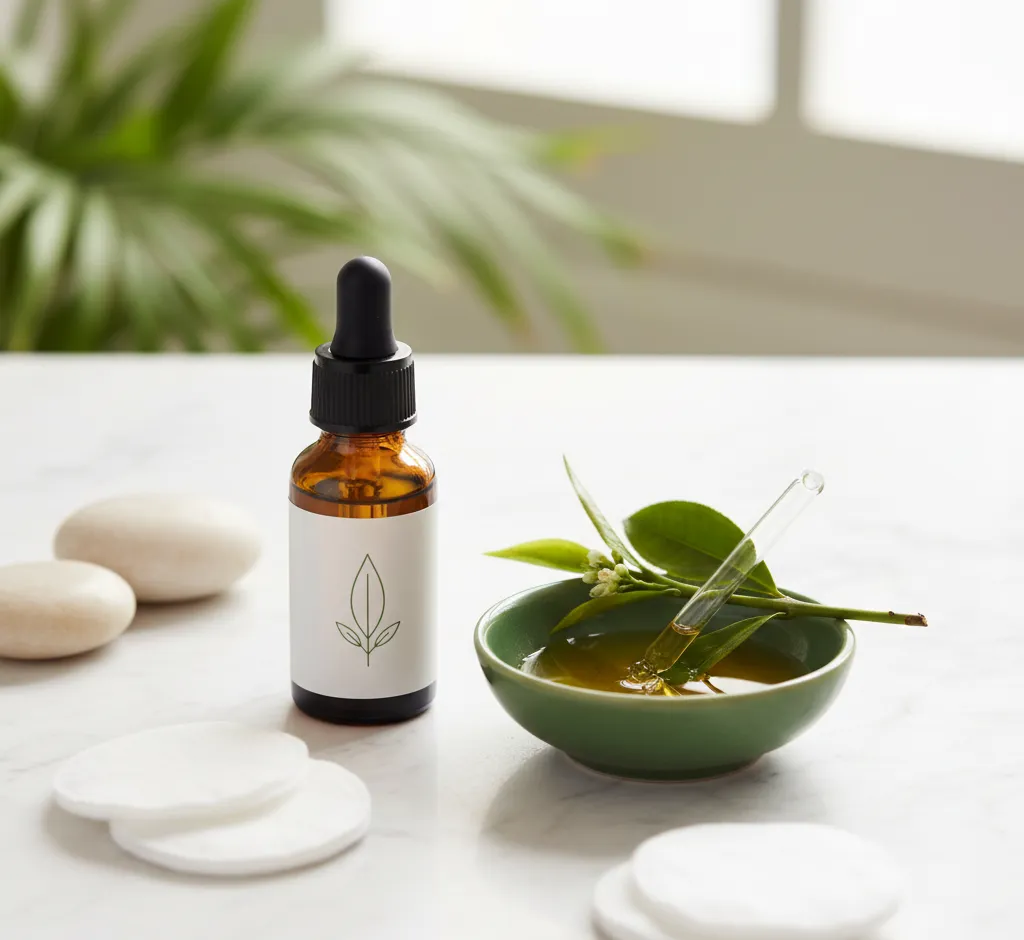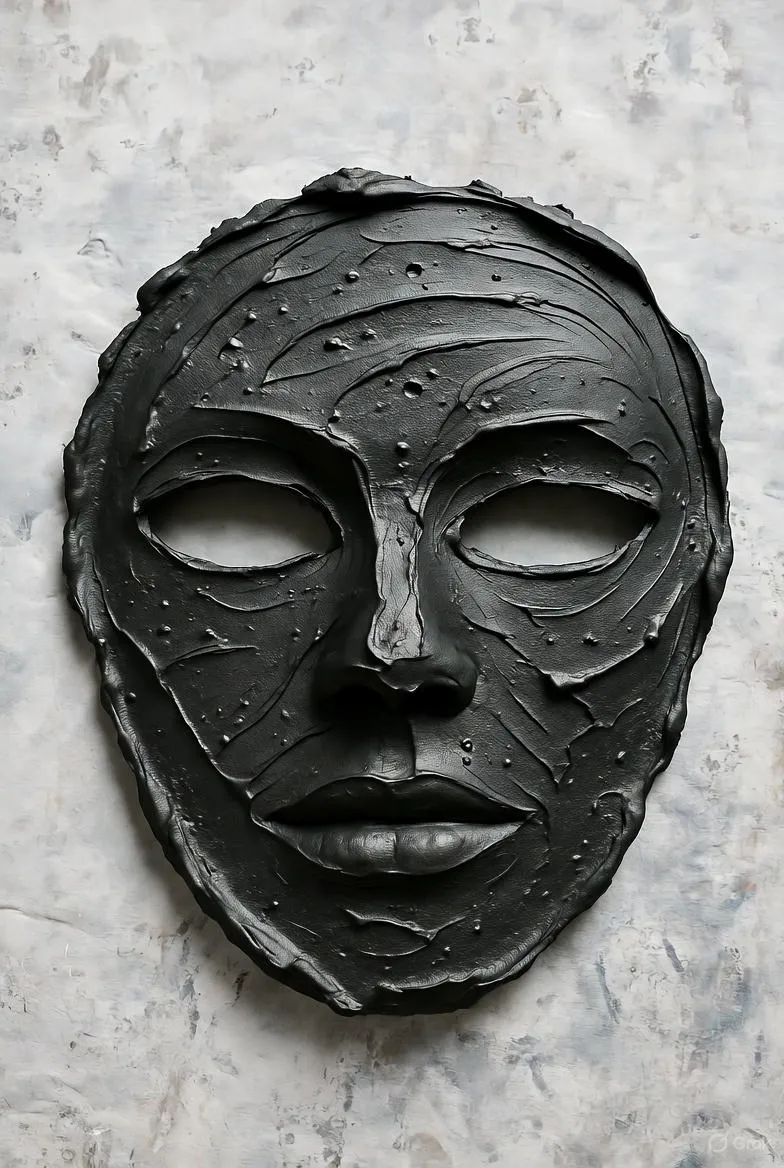Tea Tree Oil for Acne: A Comprehensive Guide to Nature's Blemish Buster
Explore the science and safe application of Tea Tree Oil (TTO) for acne. This comprehensive guide covers its powerful antibacterial and anti-inflammatory properties, proper dilution ratios, and effective methods for natural blemish treatment.

Tea Tree Oil for Acne: A Comprehensive Guide to Nature's Blemish Buster
Acne is one of the most common dermatological conditions globally, affecting millions of people across all age groups. The search for an effective, yet gentle, solution often leads individuals down the path of natural remedies. Among these, **Tea Tree Oil (TTO)** stands out as a powerful and time-tested option. Derived from the leaves of the Australian native plant *Melaleuca alternifolia*, this essential oil has gained widespread acclaim in the skincare world, particularly for its remarkable ability to combat acne.
This comprehensive guide delves into the science, application, safety, and effectiveness of using Tea Tree Oil as a primary or supplementary treatment for various forms of acne, helping you understand why this natural powerhouse deserves a spot in your skincare regimen.
Understanding Acne: The Root of the Problem
Before treating acne, it's crucial to understand what causes it. Acne vulgaris develops when hair follicles become clogged with dead skin cells and oil (sebum). This environment allows for the proliferation of a specific type of bacteria, **Propionibacterium acnes (or C. acnes)**, leading to inflammation, redness, and the formation of blemishes.
- Clogged Pores: Excess sebum and dead skin cells create the initial blockage.
- Bacterial Growth: C. acnes thrives in the anaerobic environment of the clogged follicle.
- Inflammation: The body's immune response to the bacteria and clogged follicle leads to the visible signs of acne (papules, pustules, nodules).
The Traditional Treatments and Their Limitations
Conventional acne treatments, such as Benzoyl Peroxide and Salicylic Acid, are highly effective but can often come with side effects like excessive dryness, redness, and peeling. For those with sensitive skin or who prefer a gentler approach, these side effects can be prohibitive, making the quest for natural alternatives like Tea Tree Oil even more compelling.
The Scientific Power of Tea Tree Oil
Tea Tree Oil is more than just a pleasant-smelling oil; its therapeutic properties are backed by extensive scientific research. The primary active component responsible for its antibacterial and anti-inflammatory effects is a compound called **terpinen-4-ol**.
Mechanism of Action Against Acne
TTO tackles acne through a powerful dual-action mechanism:
-
Potent Antimicrobial Activity
Terpinen-4-ol is documented to penetrate the cell walls of C. acnes bacteria, disrupting their function and ultimately leading to their demise. Studies have shown that TTO can significantly reduce the bacterial load on the skin, a critical step in controlling acne breakouts. This action is similar to how conventional antibiotics work, but without the risk of contributing to antibiotic resistance, which is a growing concern in dermatology.
-
Significant Anti-inflammatory Effects
Acne lesions are fundamentally inflammatory. TTO has been shown to suppress the release of inflammatory mediators (like cytokines) in the skin. By calming this inflammation, TTO helps to reduce the redness, swelling, and overall size of pimples, leading to faster healing and less post-inflammatory hyperpigmentation (PIH).
| Treatment | Primary Action | Common Side Effects |
|---|---|---|
| Tea Tree Oil (TTO) | Antibacterial & Anti-inflammatory | Minor dryness/irritation (if used undiluted) |
| Benzoyl Peroxide (BPO) | Kills bacteria, peels skin | Significant dryness, redness, bleaching of fabric |
| Salicylic Acid (BHA) | Exfoliates, unclogs pores | Mild dryness, sun sensitivity |
How to Safely and Effectively Use Tea Tree Oil
The cardinal rule of using essential oils, especially potent ones like TTO, is **never to apply them undiluted** directly to the skin. TTO is a powerful concentrate and must be properly diluted before topical use to prevent irritation, burning, or allergic reactions.
1. The Essential Dilution Ratio
For acne treatment, a concentration of **5% to 15% TTO** is generally considered safe and effective. This means for every 100 parts of the mixture, 5 to 15 parts should be Tea Tree Oil, and the rest a carrier oil.
Recommended Dilution Base:
Use a gentle carrier oil that is non-comedogenic (won't clog pores), such as:
- Jojoba Oil
- Grapeseed Oil
- Sweet Almond Oil (less suitable for sensitive skin)
- Rosehip Seed Oil
Pro-Tip: To achieve a safe 5% concentration, mix 1 drop of TTO with about 1 teaspoon (5 ml) of your chosen carrier oil.
2. Application Methods for Acne
Spot Treatment (Concentrated Relief)
For active blemishes, a targeted approach is often best:
- Cleanse your face thoroughly and pat dry.
- Dilute 1-2 drops of TTO with a few drops of a carrier oil on a clean cotton swab or pad.
- Gently dab the diluted mixture directly onto the pimple or affected area. **Do not rub.**
- Repeat this 1-2 times daily, ideally in the evening, after conducting a **patch test** (see safety notes below).
Full-Face Serum or Moisturizer Boost
If you have widespread moderate acne, you can incorporate TTO into your regular skincare routine:
- Add 2-4 drops of TTO into your standard, unscented facial moisturizer or serum before applying it to your entire face. This method is crucial for maintaining a very low and safe concentration.
- Alternatively, look for commercially available products (cleansers, toners, creams) that list Melaleuca alternifolia (Tea Tree) oil as an ingredient, ensuring the concentration is already safe for daily use.
Steam Treatment (Deep Pore Cleansing)
For a spa-like and pore-opening treatment, TTO can be used in a steam bath:
Add 3-5 drops of TTO to a bowl of freshly boiled water. Drape a towel over your head and lean over the bowl for 5-10 minutes. The steam will open your pores, allowing the antibacterial vapor to penetrate and cleanse deep within the follicles. This can be especially useful for cystic or deep-seated acne.
Safety First: Patch Testing and Adverse Reactions
Even though TTO is natural, it is a potent chemical compound that can cause adverse reactions, especially in sensitive individuals. Adhering to strict safety protocols is non-negotiable.
The Mandatory Patch Test
Before using TTO on your face, you must perform a patch test. Apply a small amount of the **diluted** TTO mixture to a discreet, small area of skin (e.g., behind the ear or on the inner forearm). Wait 24 hours. If you experience redness, itching, burning, or severe irritation, discontinue use immediately. If there is no reaction, it is likely safe for facial application.
Potential Side Effects
When used incorrectly (i.e., undiluted or in too high a concentration), TTO can cause:
- Contact Dermatitis: An itchy, inflamed rash.
- Dryness and Peeling: Similar to BPO, but usually less severe.
- Photosensitivity: Although rare, always use a broad-spectrum sunscreen when using TTO treatments, as essential oils can sometimes increase the skin's sensitivity to the sun.
Note on Oxidation: Tea Tree Oil should be stored in a cool, dark place and away from air exposure. Once opened, TTO can oxidize (react with oxygen). Oxidized TTO is more likely to cause skin irritation and allergic reactions. Always check the expiration date and ensure the bottle is tightly sealed.
What the Clinical Research Says
The efficacy of TTO for acne is not just anecdotal; it is supported by clinical trials. One of the most frequently cited studies compared a 5% TTO gel to a 5% Benzoyl Peroxide lotion.
The results indicated that while BPO acted faster in the initial weeks, the TTO gel was **just as effective** at reducing the number of acne lesions and their severity after three months of use. Crucially, the TTO group reported **significantly fewer side effects** like peeling, burning, and dryness compared to the BPO group. This makes TTO an excellent choice for individuals who prioritize long-term, sustainable treatment with minimal side effects.
TTO and Cystic Acne
While TTO is highly effective for mild to moderate acne (whiteheads, blackheads, papules, and pustules), its efficacy for severe, nodular, or cystic acne is limited when used alone. Cystic acne involves deep, painful inflammation that requires systemic treatment. However, even in severe cases, TTO can be used as a **supportive therapy** to calm surface inflammation and prevent secondary bacterial infection, working in conjunction with prescription medications.
Integrating Tea Tree Oil into Your Full Skincare Routine
For the best results, TTO should be part of a well-rounded skincare routine:
- Morning: Gentle cleanser, a light application of TTO (if using a pre-mixed product), **Oil-Free Moisturizer**, and **Broad-Spectrum SPF 30+**.
- Evening: Gentle cleanser, Toner (optional), Targeted spot treatment with **Diluted TTO**, and a hydrating night cream or serum.
Avoid Mixing With: Be cautious when combining TTO spot treatments with high concentrations of other strong actives, particularly **retinoids (retinol, tretinoin)** and **high-percentage AHAs/BHAs**, as this can overwhelm and irritate the skin, leading to a compromised skin barrier.
Final Thoughts: The Natural Choice for Clear Skin
Tea Tree Oil represents a powerful, natural, and scientifically validated option for managing acne. Its dual-action antibacterial and anti-inflammatory properties offer a gentler alternative to some conventional treatments, making it especially appealing for those with sensitive skin.
By understanding the proper dilution methods, committing to a consistent application schedule, and always prioritizing safety through patch testing, you can effectively harness the natural power of *Melaleuca alternifolia* to achieve a clearer, calmer complexion. While it requires patience—like any acne treatment—the rewarding results of integrating this versatile essential oil into your routine are well worth the effort.


